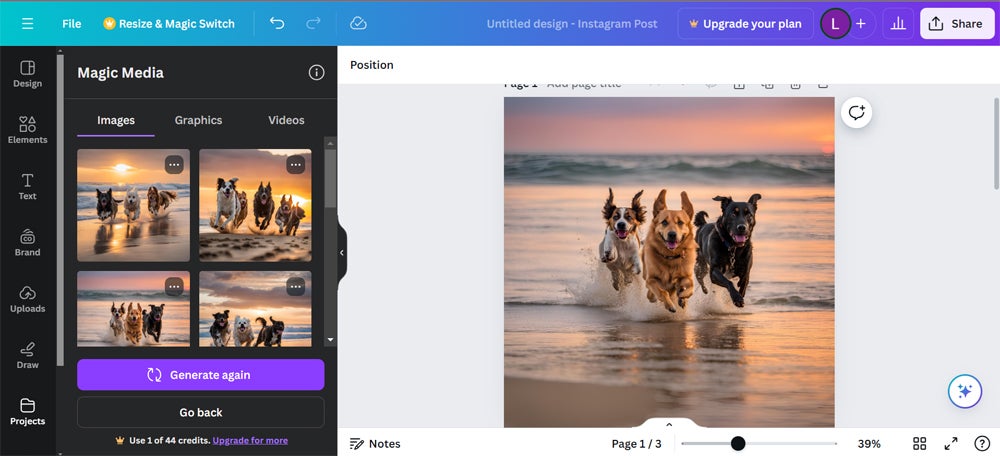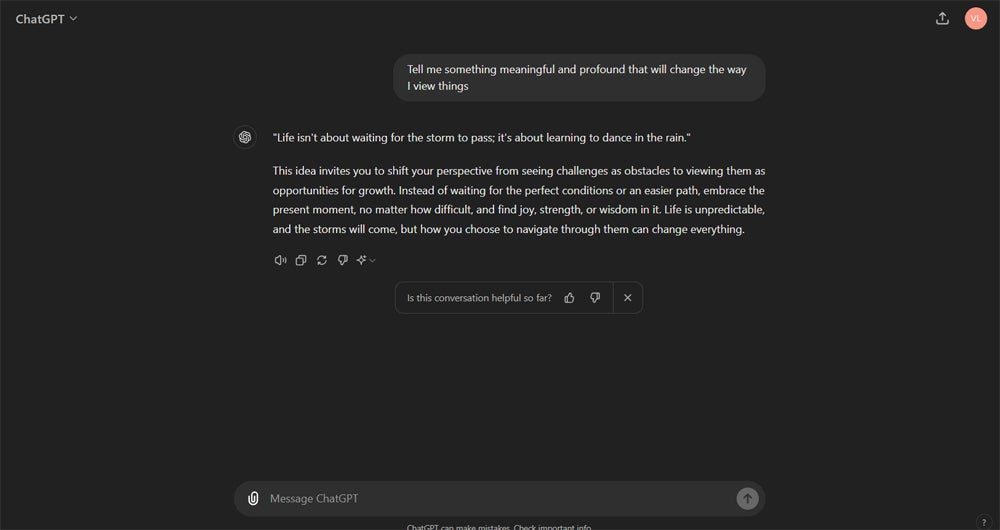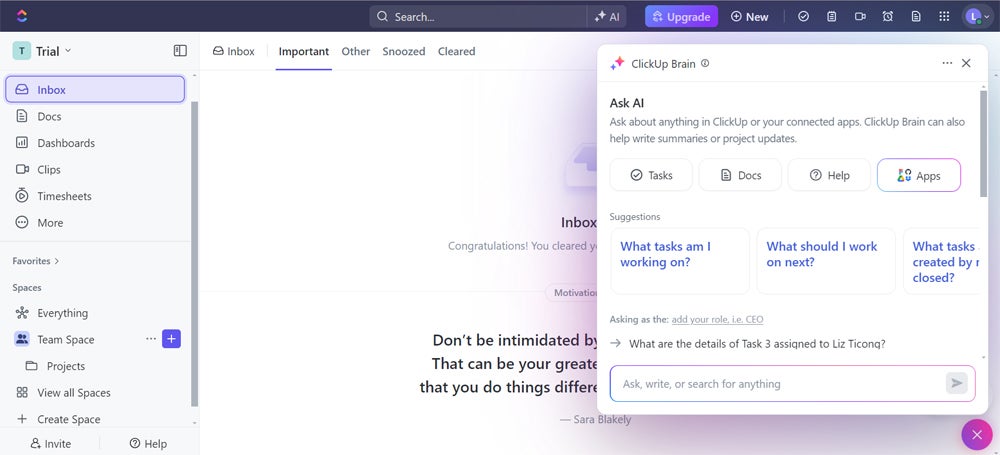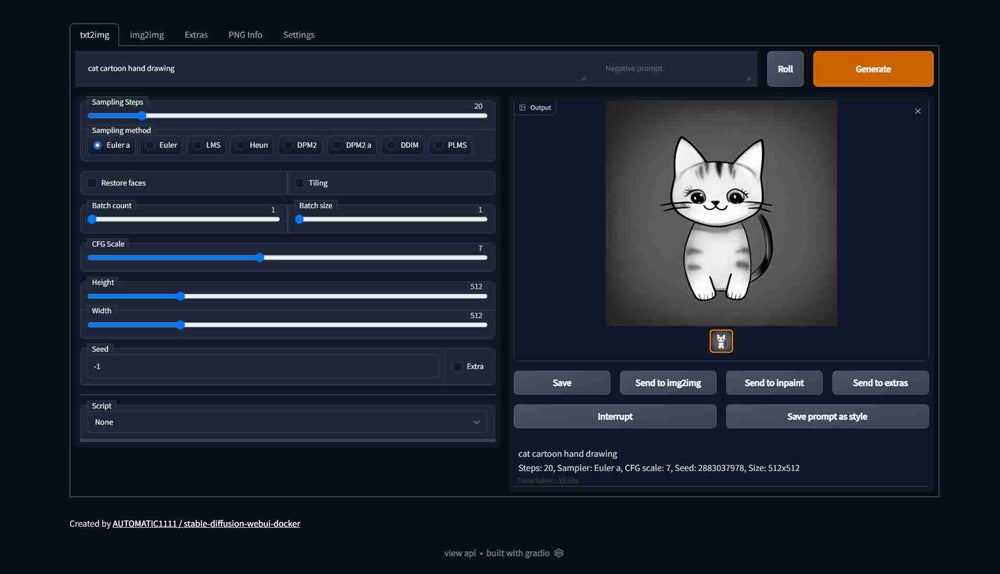As artificial intelligence (AI) technology continues its rapid advance, free AI tools play an important role in making its powerful capabilities accessible to everyone. These tools let individuals and budget-conscious organizations use AI without the hefty price tag, fostering innovation across a range of sectors. We selected the six best free AI tools available today to equip you with valuable resources to boost creativity and productivity. Whether you’re seeking to refine your writing, generate high-quality visuals, or automate processes, these options can offer practical solutions to elevate your work.
- Canva: Best for Design and Media Creation
- ChatGPT: Best for Conversational AI
- ClickUp: Best for Workflow Automation
- Grammarly: Best for Writing Assistance
- Stable Diffusion: Best for Creative Image Generation
- Synthesia: Best for Custom AI Videos
Featured Partners: AI Software
Best Free AI Tool Comparison
The following table gives an overview of our recommended free AI tools and their overall ratings, key capabilities, output quality, and free usage limitations.
| Free AI Tool | Overall Rating | Key Attributes | Free Version Output Quality |
Free Usage Limits |
|---|---|---|---|---|
| Canva | ★★★☆☆ | Design templates and layout suggestions | Good | 50 uses per account |
| ChatGPT | ★★★★★ | Advanced conversational capabilities | Excellent | GPT-4: 25 messages every three hours DALL-E 3: Two images per day |
| ClickUp | ★★★☆☆ | Knowledge and project management | Good | 100 uses per Workspace |
| Grammarly | ★★★★★ | Grammar and style checks | Excellent | 100 prompts per month |
| Stable Diffusion | ★★★☆☆ | Text-to-image generation | Excellent | Unlimited with downloadable API |
| Synthesia | ★★★★☆ | AI video generation with avatars | Fair | Three minutes of videos per month |
TABLE OF CONTENTS

Canva
Best for Design and Image Creation
Overall Rating: 3/5
- Effectiveness: ✔
- User Experience: ✔
- Performance: ✘
- Accessibility: ✔
- Renewable Free Access: ✘
Canva is an online design and image creation platform celebrated for its user-friendly interface. It comes with thousands of ready-to-use templates for diverse outputs, including logos, presentation, and infographics, simplifying the design process for beginners and experienced users.
Built-in AI capabilities improve the quality of the generated output. They’re free for the first 50 uses on the Canva Free account, and then an upgrade to a paid plan for $10 or $15 is needed. AI features include Magic Media—which generates high-quality images from text prompts—and Magic Design, which builds entire presentations from descriptions. The platform assists in composing text outputs through Magic Write and Magic Edit features and provides enterprise users with AI indemnification at no additional cost to protect you in the event of intellectual property claims from content made with its AI tools.
Since its launch in 2013, Canva has worked steadily to expand its offerings and has acquired multiple businesses to that end. With its recent acquisition of Leonardo.Ai, a generative AI company, it aims to become the world’s leading design technology.
Interface Design
Canva has a drag-and drop, user-centric interface with comprehensive features neatly organized into collapsible icons for more efficient navigation. Clicking on an icon opens a selection of creative assets that you can add to your content, like text, graphics, and user-uploaded content. It also lets you resize, rename, or share your image without navigating to another page. This approach lets the tool offer numerous capabilities and options without overwhelming users.

Why We Picked Canva
Ease of use, effectiveness, and accessibility are the main reasons we recommend Canva. It serves its purpose well and helps free users create stunning images, graphics, and videos for personal and professional use. Its AI-generated visuals are also customizable, giving you the chance to tailor the outputs to fit your exact requirements.
Pros and Cons
| Pros | Cons |
|---|---|
| Extensive library of templates and design elements | Usage of AI features limited to 50 interactions |
| AI design assistant suggests layouts and elements based on content | High-quality assets and advanced features may require Pro subscription |
| User-friendly interface | Customization can be limited compared to professional design software |
Pricing
- Free: Up to 50 total uses per account
- Pro: $15 per user, per month for 500 images per month
- Teams: $10 per user, per month for 500 monthly uses per user
- Enterprise: Custom pricing
Features
- AI design assistant
- Extensive template library
- Magic Studio
- Magic Media
- Canva Shield

ChatGPT
Best for Conversational AI
Overall Rating: 5/5
- Effectiveness: ✔
- User Experience: ✔
- Performance: ✔
- Accessibility: ✔
- Renewable Free Access: ✔
OpenAI’s ChatGPT is a popular and versatile conversational AI that can engage you in natural language interactions on a wide range of topics. It generates coherent and contextually-relevant text, making it excellent for both casual and deep conversations. Additionally, this free AI tool can help with coding, writing content, and answering questions.
Unlike traditional chatbots that rely on scripted responses, ChatGPT uses a sophisticated machine learning algorithm that adapts and learns from user interactions. It remembers context from previous conversations, allowing it to maintain continuity in exchanges. It outperforms other conversational AI chatbots in terms of accuracy and relevance of responses.
OpenAI has a strong focus on making AI more accessible for everyone and added two major features to ChatGPT’s free version. Its recent update allows users to upload files for analysis and generate images through DALL-E 3 for free.
Interface Design
ChatGPT has a minimalistic interface with a text box where you can type your prompts or converse with the tool. It also displays your past AI interactions so you can always get back to them and continue conversations whenever you want.

Why We Picked ChatGPT
ChatGPT made it to our list because of its remarkable versatility and accessibility. You can use it for a variety of tasks, including text generation, summarization, image generation, and coding. It also prioritizes accessibility by giving users access to features that were originally available only to paid users.
Pros and Cons
| Pros | Cons |
|---|---|
| Advanced conversational capabilities with diverse applications | Occasional inaccuracies in outputs |
| Multimodal interactions enhance user experience | Creative limitations compared to human imagination |
| Continuous updates and evolution expand its capabilities | Strict usage limits even for paid plans |
Pricing
- Free version
- Plus: $20 per user, per month
- Team: $30 per user, per month
- Enterprise: Custom pricing
Features
- Human-like text generation
- Multimodal interaction capabilities
- Accessibility features for inclusive use
- Image generation

ClickUp
Best for Workflow Automation
Overall Rating: 3/5
- Effectiveness: ✔
- User Experience: ✘
- Performance: ✔
- Accessibility: ✔
- Renewable Free Access: ✘
ClickUp is an all-in-one project management software with artificial intelligence capabilities that streamline workflow automation. It offers customizable dashboards, real-time chat for team collaboration, and visual widgets to track team members, tasks, sprints, and time.
Its AI assistant, ClickUp Brain, combines conversational, contextual, and role-based AI within the platform. It connects tasks, docs, and people in one place, making every part of your workflow more efficient. It also assists with quickly drafting project plans and creating subtasks from task details. In addition, it can generate real-time project summaries and updates. Signing up for a free ClickUp account gives you access to its AI tool.
ClickUp continues to upgrade ClickUp Brain and recently launched the Salesforce Connected Search and AI feature. This enhancement allows users to locate and get answers to Salesforce content from the platform through the AI assistant.
Interface Design
ClickUp Brain’s interface has a lot of options to assist you with your tasks, documents, and other connected applications. It also has recommended questions you might want to ask and a chatbox to start AI conversations. While designed to be helpful, these options can be excessive and overwhelming.

Why We Picked ClickUp
We selected ClickUp because its AI feature provides central assistance that enables you to manage several aspects of your workflow without navigating from your current tasks, increasing efficiency.
Pros and Cons
| Pros | Cons |
|---|---|
| AI integrates seamlessly with existing project management features | Extensive feature set can overwhelm new users |
| Highly relevant and effective AI tool for project management workflows | Add-on costs an additional $7 per user per month |
| AI assistance for various tasks | Free AI capability limited to 100 uses |
Pricing
- Free for the first 100 uses, per Workspace
- Add-on to any ClickUp’s paid plan for $7 per user, per month
Features
- Conversational AI
- Recommended questions
- Page summarization
- Role-based AI

Grammarly
Best for Writing Assistance
Overall Rating: 5/5
- Effectiveness: ✔
- User Experience: ✔
- Performance: ✔
- Accessibility: ✔
- Renewable Free Access: ✔
Grammarly is an AI-powered writing assistant that can help inspire new ideas and build outlines for different types of write ups, such as articles and emails. It guides through its AI-generated suggestions you can use for free on web browsers, desktops, and mobile devices.
With Grammarly, you can adjust your writing to match a particular style, tone, or brand. This AI tool can also summarize emails and help you compose replies quickly using context-specific prompts. It can generate stories for you, rate aspects of your writing, and check your work for possible plagiarism.
Bringing responsible AI use to the next level, Grammarly announced the upcoming launch of its AI detection tool called Grammarly Authorship. Authorship is designed to produce a detailed report about a piece of content, identifying which sections are human-typed, AI-generated, or edited using AI tools. Grammarly plans to release this tool in September 2024.
Interface Design
Grammarly has a clean interface with an AI assistant, chatbox, and formatting icons to help you refine your content. It offers capabilities such as content scoring, generative AI, and a plagiarism checker while maintaining simplicity.

Why We Picked Grammarly
We picked Grammarly as one of best AI tools because of its in-depth features that go beyond basic spell-check. It analyzes text in real-time and gives instant suggestions and refinements to improve content quality and readability. It helps individuals become more confident in their writing without spending a dime.
Pros and Cons
| Pros | Cons |
|---|---|
| Comprehensive writing assistance for grammar, style, and tone | Limit of 100 prompts a month |
| Real-time suggestions enhance writing efficiency | May not capture the nuances of creative writing styles |
| Personalized feedback adapts to individual writing styles | Relies on internet connection for full functionality |
Pricing
- Free: 100 prompts per month
- Pro: $12 per user, per month
- Enterprise: Custom pricing
Features
- Real-time grammar, punctuation, and style corrections
- Personalized writing suggestions and feedback
- Multi-platform accessibility
- Generative AI assistance

Stable Diffusion
Best for Creative Image Generation
Overall Rating: 3/5
- Effectiveness: ✔
- User Experience: ✘
- Performance: ✘
- Accessibility: ✔
- Renewable Free Access: ✔
Stable Diffusion by Stability AI is a powerful text-to-image AI model for generating images in a wide variety of styles. It can create anything from photorealistic landscapes to abstract art based on a simple text prompt, making it suitable for creative image generation. You can also add images to your prompts to influence the output’s composition and style.
One of Stable Diffusion’s key strengths is generating highly-detailed characters depicting a strong sense of mood. The model also supports inpainting and outpainting, allowing for modifications of existing images, adding to its versatility. Stable Diffusion is available as an open-source tool on GitHub, with a Community License for free use.
Stable Diffusion has evolved significantly since its launch, with a recent update introducing Stable Diffusion 3. This new model upgrades performance in multi-subject prompts, image quality, and spelling abilities.
Interface Design
Stable Diffusion can be difficult to navigate for users with no prior experience working with GitHub. Its interface has multiple tabs and design customization options that use technical jargon, making it hard to understand for beginners. In addition, installing and running this open-source AI tool requires technical expertise.

Why We Picked Stable Diffusion
We recommend Stable Diffusion because of its remarkable capabilities in generating high-quality, intricate images. Additionally, its community license and open-source nature democratizes access to advanced AI technology, allowing individuals and small businesses to experiment and innovate without financial barriers.
Pros and Cons
| Pros | Cons |
|---|---|
| High-quality, detailed images from text prompts | Slow image generation process |
| Highly-customizable outputs | Open-source nature requires some technical knowledge to get started |
| Supports a diverse array of styles and themes | Free version only for research, non-commercial, and small commercial organizations |
Pricing
- Community License: Free for researchers, non-commercial organizations, and businesses with annual revenues under $1 million
- Enterprise License: Custom pricing
Features
- Advanced text-to-image generation capabilities
- High degree of customization for creative expression
- Inpainting and outpainting for modifying existing images
- Open source model encourages community development and innovation

Synthesia
Best for Custom AI Videos
Overall Rating: 4/5
- Effectiveness: ✔
- User Experience: ✔
- Performance: ✔
- Accessibility: ✘
- Renewable Free Access: ✔
Synthesia is an AI video creation platform that enables you to build studio-quality custom videos using AI-generated avatars and voiceovers. It has numerous features for crafting videos for different purposes and voiceovers in over 140 languages to help you reach a wider audience.
One of the best things about Synthesia is it allows you to quickly create high-quality videos without breaking the bank. You can produce videos with simple prompts, make a custom avatar, and clone your voice. It offers a broad selection of customizable AI avatars and video templates which you can use as a starting point in creating training, marketing, and sales enablement videos. Its free version includes three minutes of videos per month.
Synthesia regularly enhances their offering by adding new features to its platform, such as expressive AI avatars and Personal Avatars. Expressive AI avatars display emotions and empathy to connect with audiences more effectively, while a Personal Avatar is a digital twin that mimics the way you look and sound.
Interface Design
Synthesia has a simple interface with clearly-labeled icons for easy navigation. It lets you select an AI avatar for your video and has a text box where you can type your script. It offers options to modify the video background and add music, too.

Why We Picked Synthesia
We highly recommend Synthesia because of its user-friendly platform and extensive customization options. The tool supports rapid video creation, even if you’re not an expert. Synthesia also has a wide range of features, enabling you to tailor your videos for specific audiences you want to connect with.
Pros and Cons
| Pros | Cons |
|---|---|
| Significantly reduces video production costs | Only accessible on its web platform |
| Streamlines the creation of localized content | Issues with voiceovers syncing with the avatar |
| Enables rapid video content creation without specialized skills | Fewer visual styles compared to traditional video production |
Pricing
- Free: Includes three minutes of video per month
- Starter: $29 per month, includes one editor and three guests
- Creator: $89 per month, includes 1 editor and five guests
- Enterprise: Custom pricing
Features
- AI-driven video creation from text scripts
- Custom avatar
- Voiceovers in more than 140 languages
- More than 120 AI avatars
How We Evaluated the Best Free AI Tools
We assessed each of the free AI tools individually based on five key criteria: relevance and effectiveness; user experience; performance; accessibility; and renewable free access. For each criterion, we assigned a binary yes or no. We gave each “yes” a point and added up the total for each tool with a maximum score of five.
- Relevance and Effectiveness: We evaluated each AI tool on how effectively it fulfills its intended purpose.
- User Experience: We measured the free AI tool’s user-friendliness, taking ease of navigation and intuitive design into consideration.
- Performance: We gauged the tool’s efficiency, speed, and accuracy in performing its designated task.
- Accessibility: We checked if the tool’s free version is available across different platforms and devices.
- Renewable Free Access: We determined if the tool’s free version has usage limits, and if these limits reset periodically, allowing for continued free access without requiring payment.
Frequently Asked Questions (FAQs)
Which is the Best AI Tool for Free?
There isn’t a single best AI tool for free, since the choice depends on your specific needs. But this guide highlights top options for diverse use cases. For even more free options, be on the lookout for AI trends, as new tools are frequently introduced as technology advances and more companies enter the market.
Is There a Totally Free AI App?
There are many free AI applications. In fact, all the AI tools in this guide are completely free.
What is the Best Free AI Chatbot App?
Based on our research, ChatGPT by OpenAI is the best free AI chatbot app. It has advanced language capabilities, versatile, totally free, and easy to use.
Bottom Line: Explore the Best Free AI Tools
Exploring the best free AI tools on our list is a smart move if you’re looking to gain a firsthand experience and see how AI tools can enhance your daily tasks. With countless AI tools being launched everyday, it’s worth trying what’s out there to find the ones that can actually benefit you or your business. Free AI tools can be surprisingly effective, providing valuable solutions without financial commitment. This guide was designed to help you find the top free AI tools for various use cases, whether you’re interested in writing, graphic design, or project management. However, while these options are a great resource, it’s important to be mindful of their limitations and set realistic expectations.
Find out more about the top leaders in the AI industry by reading our list of the 150 Top AI Companies of 2024.
